From desolate craters to bubbling mud pools and geothermal caves, the area around Lake Mývatn is a microcosm of all the natural wonders that Iceland has to offer. Rare birds abound, and the North´s answer to the Blue Lagoon is a great place to soak up the view. A little further away, on either side lie impressive waterfalls, one of which is Dettifoss, the most powerful waterfall in Europe. But wherever you go, take time to enjoy the lake itself. With gnarled lava fields on the one side, and lush pastures on the other, it’s a beautiful area to spend time, with a wide range of places to explore.
Hveraströnd Sulfur Springs
A decidedly lunar looking location, with scorched yellow earth and sulfuric acid melting the ground into bubbling mud, Hveraströnd Sulfur Springs are one of the most popular sites to visit in the area. Referred to by various names, it lies at the foot of Námafjall (Mine Mountain), is accessed via Námaskarð (Mine Pass), but is actually called Hverir (Hot Springs) or Hveraströnd (Hot Springs Beach).
Krafla Caldera
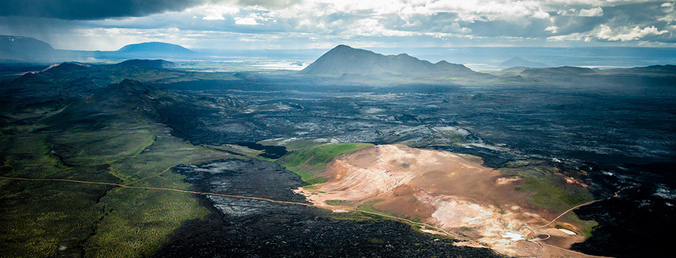
To the North of Hveraströnd you can find the Krafla Caldera, an expansive cauldron shaped area where the Krafla Fires occurred in the 1970s. At the end of the road is Víti Maar (The Crater Of Hell), with it´s opaque teal green lake. Or if you park in the car park before it, and take a short walk, you will find Leirhnjúkur, an incredible active lava field, with amazingly diverse rock formations and sulfur fields similar to Hveraströnd.
Jarðböðin Mývatn Nature Bath
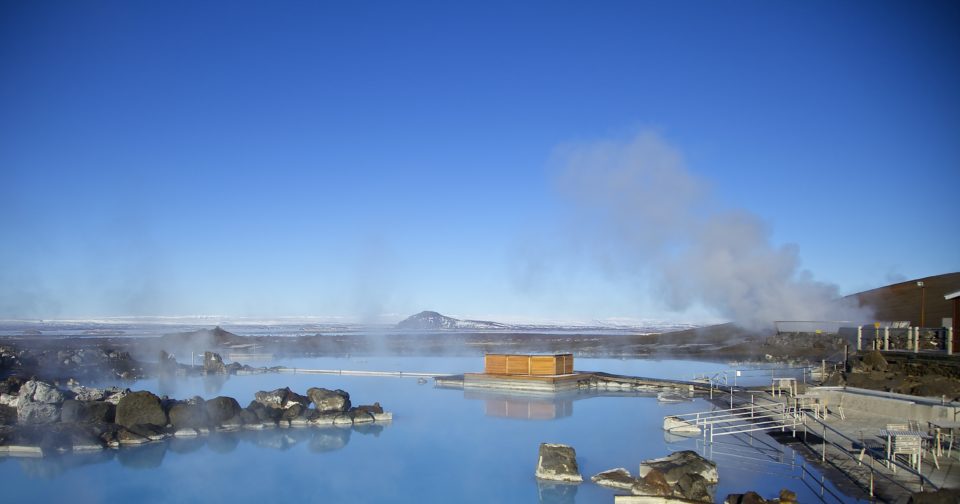
A short distance uphill from the lake is the North´s version of the Blue Lagoon, Mývatn Nature Baths. A great place to soothe your aching limbs after hiking around the lava fields, the baths here are easily one of Iceland´s finest geothermal pools. Arguably better than it´s big brother in the south, the Mývatn Nature Baths feel less touristy, let you take pints of beer into the pool with you, and has magnificent views down the mountain, across the lake itself.
Dimmuborgir Lava Formation
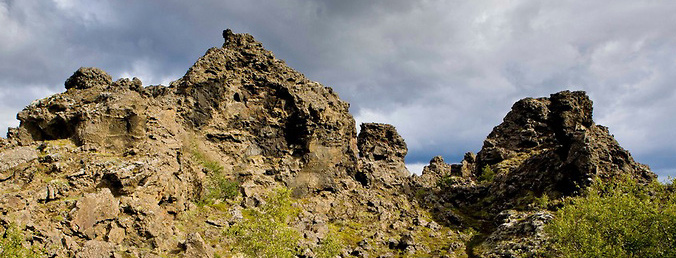
Twisted towers of coagulated rock breach the earth’s surface to form a lava field full of giant pillars and arches to scramble around. These dramatic structures never fail to impress and aren’t known to exist anywhere else in the world on dry land. The café here also stocks the local bread, a molasses concoction baked in geothermal vents, called Hverabrauð.
Höfði Lakeside Walk
Opposite Dimmuborgir, walking through a refreshingly green and forested area leads to a series of viewpoints, each offering different lakeside vistas and sights of the picturesque lava formations submerged within the lake itself.
Skútustaðagígar Pseudo-Craters
To the southwest, take a lengthier walk around the ‘pseudo-craters’. Small, easily accessible craters covered in grass, they make for a pleasant lakeside walking on a summer´s afternoon.
Stóragjá and Grjótagjá Caves
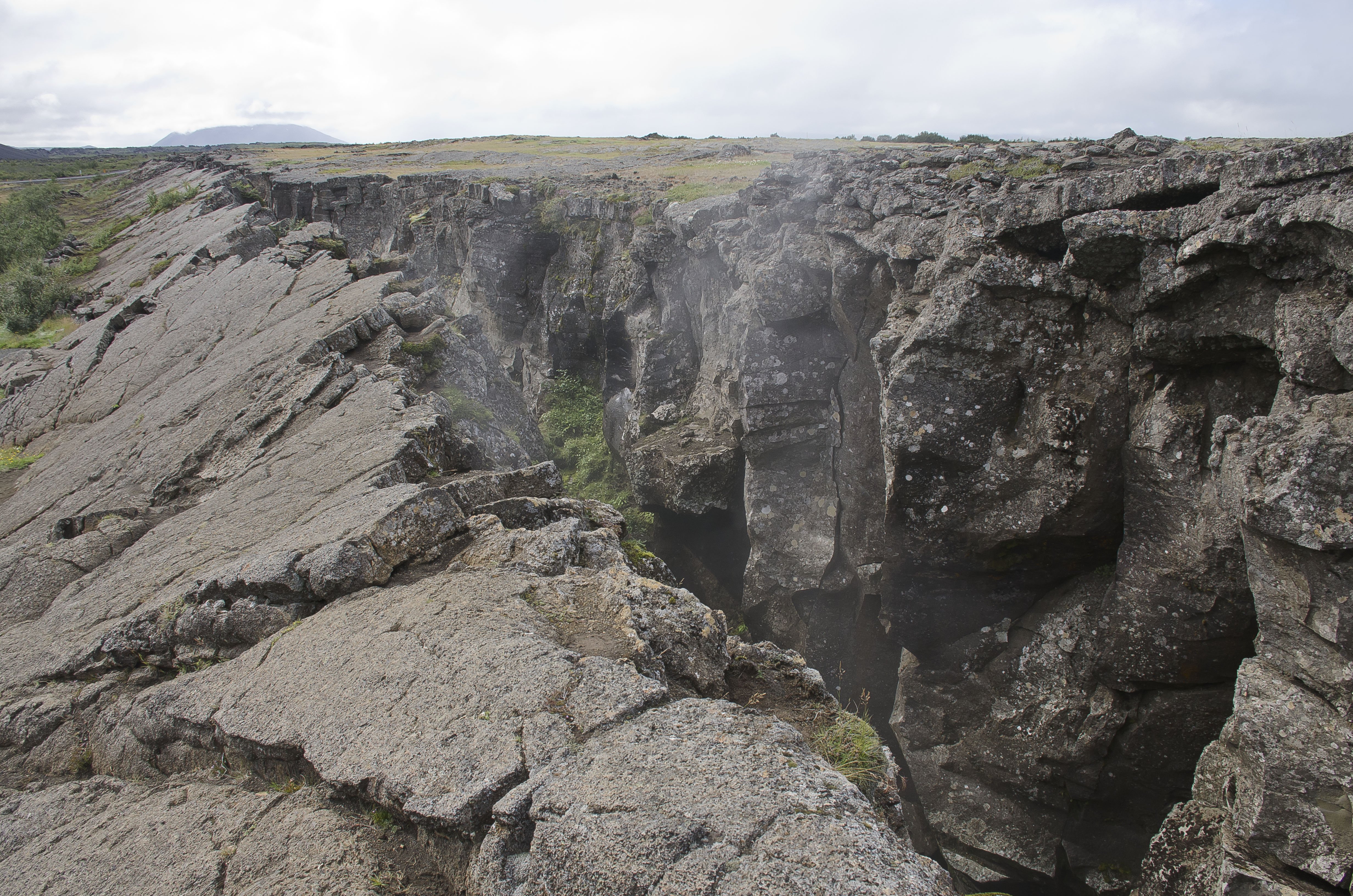
There are two caves close to Reykjahlíð. The water that fills the caves is brightly blue and utterly clear, the air inside is warmed up by the heat of the water and the whole setting is otherworldly.
Hverfjall/ Hverfell Mountain
The immense, charred black crater of Hverfjall looms as a constant presence across the east side of the lake. If wandering around the edge of a massive volcanic black hole sounds like your cup of tea, then this is definitely the place to do it. Trails here also lead to and from Dimmuborgir.
Sigurgeir’s Bird Museum
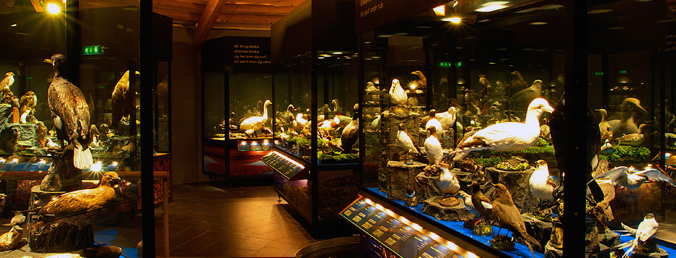
Last but not least, there is the Bird Museum. A well renowned destination for bird-watchers, Lake Mývatn has the only breeding populations of Barrow´s Goldeneye in the whole of Europe. Make the most of the varied bird life here, by learning about the different species and watching them through the telescope and hides nearby.
Getting There
There are two routes to Lake Mývatn from Húsavík. Taking the road south from Húsavík, the quickest option is to turn left on road 87. However, this route has sometimes no service in winter soc heck the road conditions at road.is before you take off. When you reach the junction in front of the lake, turn left to get to the center, where there is a tourist information office and supermarket.
The other option is road 85 until short before Laugar and then stay straight on road nr. 1.
At most of the stops around the lake there are small circuits from 30 minutes to 1 hour to enjoy the surroundings, but traveling around in a car it´s easy to feel a little distanced from the natural environment. So, we highly recommend taking advantage of some of the other methods of travel. There is a range of lengthier hiking trails, but you can also hire bikes and horses, take a flyover in a plane with Myflug.
More information about the Mývatn area can be found at www.visitmyvatn.is. Different hiking routes around Mývatn can be found here.